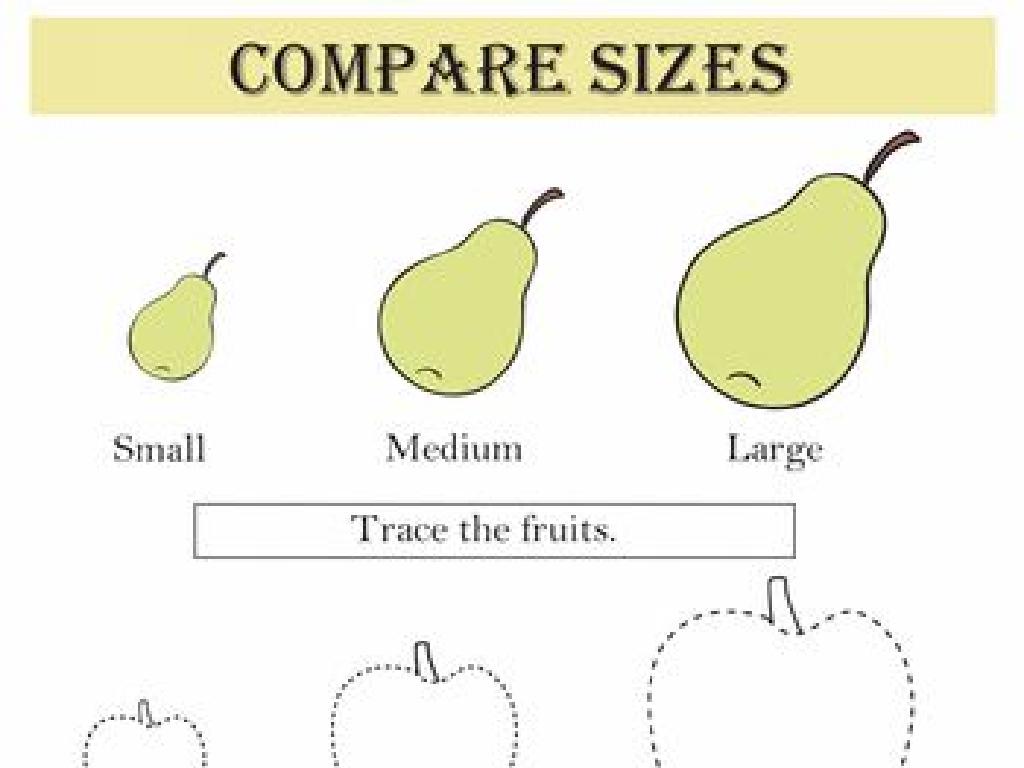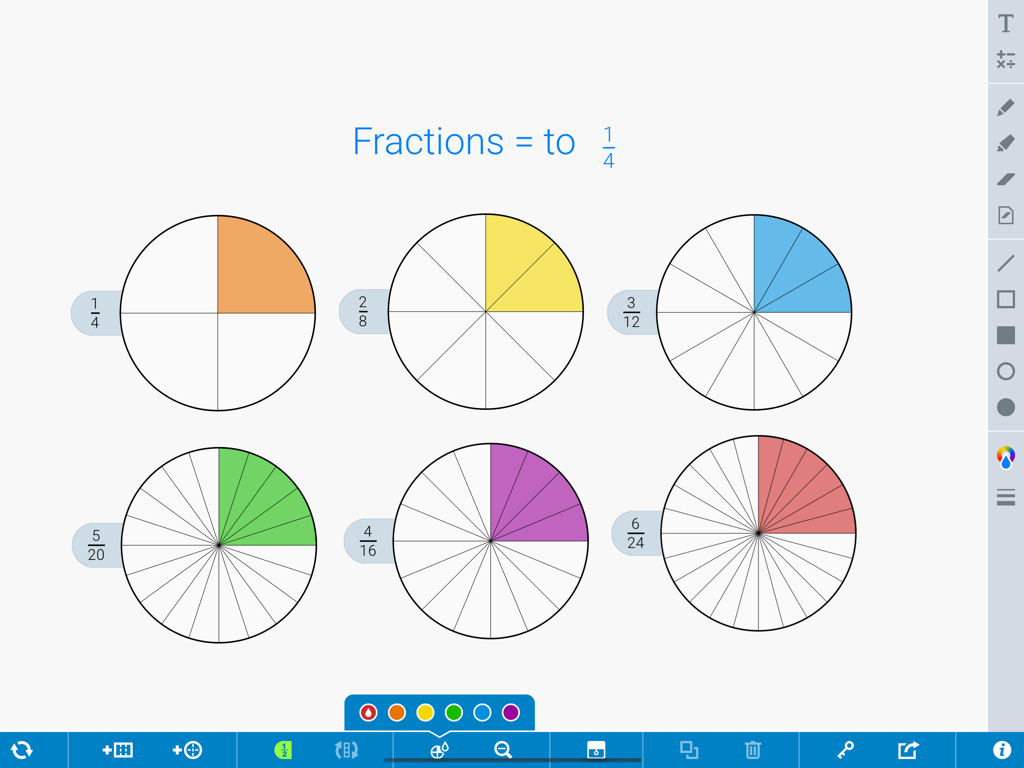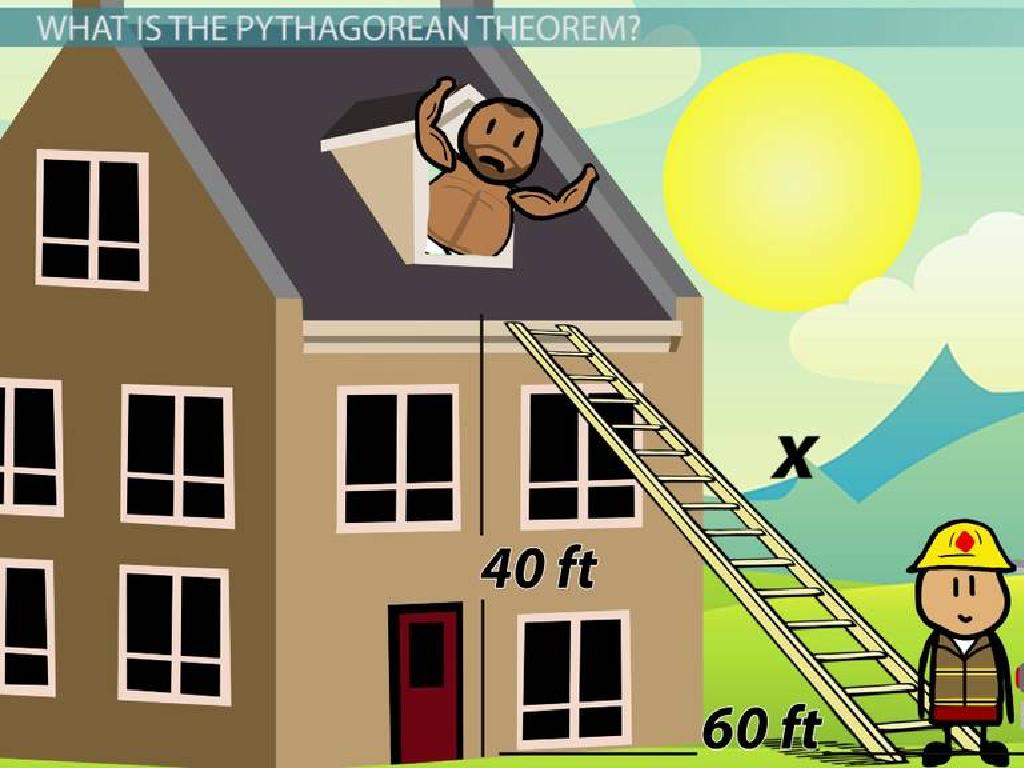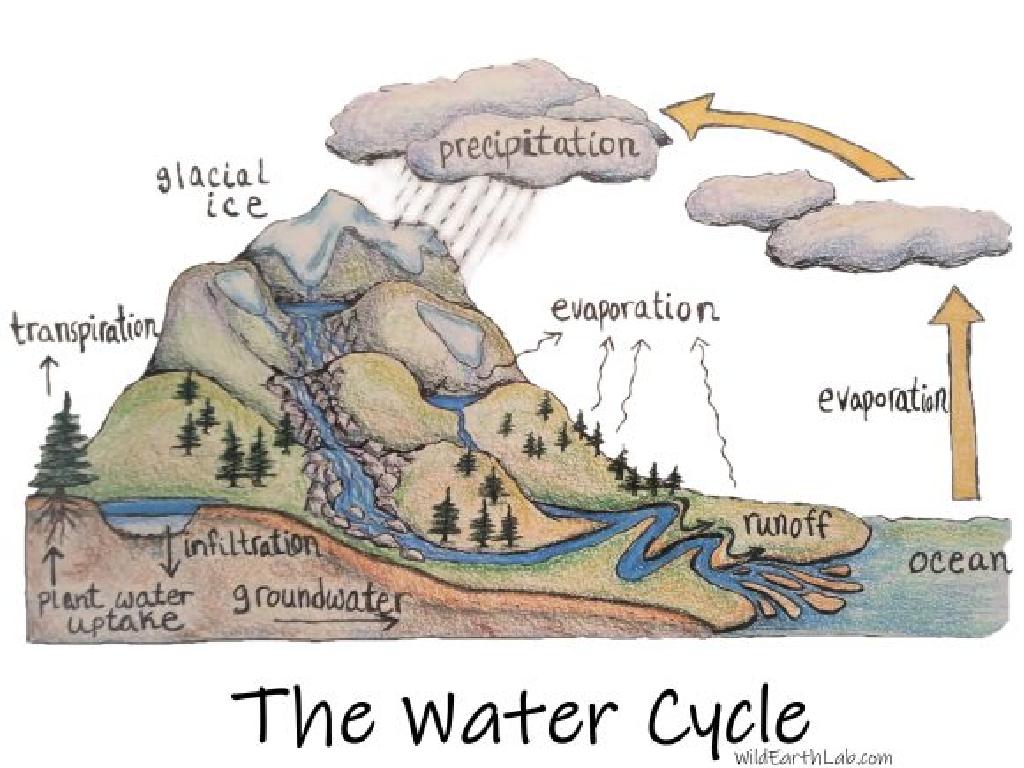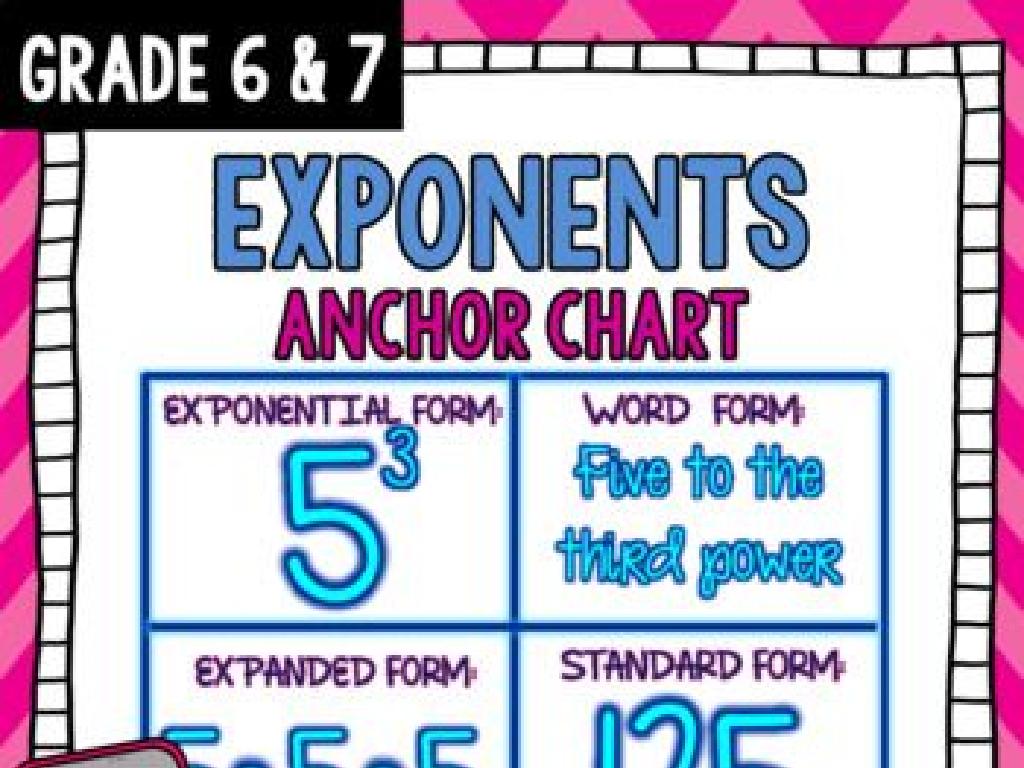Equal Sides
Subject: Math
Grade: Kindergarten
Topic: Two-Dimensional Shape Attributes
Please LOG IN to download the presentation. Access is available to registered users only.
View More Content
Welcome to Shapes: Exploring Equal Sides
– Greet our shape explorers
– Today’s focus: Shapes and sides
– Identifying shapes in the room
– Look around, what shapes do you see?
– Understanding equal sides
– Sides of a shape that are the same length
|
Begin the class with a warm welcome, engaging the children’s curiosity about the world of shapes. Introduce the concept of sides of shapes, emphasizing the idea of ‘equal sides’. Encourage the children to look around the classroom and identify familiar shapes, such as the square windows or the circular clock. Explain that some shapes have sides that are all the same length, like a square, while others do not, like a rectangle. Use physical props if possible to demonstrate this concept. The goal is to make the children aware of the shapes in their environment and to begin understanding the basic property of equal sides in a fun and interactive way.
Exploring Shapes and Their Sides
– Shapes are everywhere!
– Shapes have sides and corners
– Counting sides of shapes
– Look at a square and a triangle. How many sides do they have?
– Understanding equal sides
– Some shapes have sides that are all the same length, like a square!
|
This slide introduces young learners to the concept of shapes and their properties, such as sides and corners. Start by pointing out the various shapes that can be found in the classroom or their homes. Explain that sides are the lines that make up the shape, and corners are where two sides meet. Use physical shapes or images to help students count the number of sides each shape has. Emphasize shapes with equal sides, such as squares, to prepare them for understanding more complex shapes in the future. Encourage the students to ask questions and to explore shapes through hands-on activities like building with blocks or drawing shapes on paper.
Meet Mr. Square and His Equal Sides
– A square has four sides
– Each side is the same length
– Like four pencils of the same size
– Sides of a square are equal
– If you walk around Mr. Square, it takes the same number of steps on each side!
– ‘Equal’ means ‘the same as’
|
This slide introduces the concept of ‘equal sides’ using the example of a square, which is a shape familiar to kindergarteners. Emphasize that all four sides of Mr. Square are the same, which is why we call them ‘equal.’ Use tangible examples like comparing the sides to objects they know, such as pencils, to make the concept relatable. Encourage the children to visualize walking around a square and counting their steps to understand equality in length. Activities can include using building blocks to create squares, measuring sides with string, or drawing squares with crayons to reinforce the concept of equal sides.
Finding Equal Sides in Shapes
– Shapes with equal sides
– Do circles have sides?
– A circle is round, no straight sides!
– Triangles with equal sides
– Yes, some triangles have 3 equal sides
– Exploring shapes together
– Let’s find and draw shapes with equal sides
|
This slide introduces the concept of equal sides in two-dimensional shapes to Kindergarten students. Begin by explaining that some shapes have sides that are the same length, which we call equal sides. Use physical shapes or drawings to demonstrate. Clarify that while circles are a shape, they do not have sides like squares or triangles. Discuss how triangles can have equal sides, known as equilateral triangles, and encourage students to identify and draw shapes with equal sides. This interactive approach helps students recognize and understand the concept of equal sides in a fun and engaging way.
Shapes and Sides Game
– Let’s play a matching game!
– Find shapes with equal sides
– Look for sides that are the same length
– Match them together
– Put the same-sided shapes in pairs
– Ready, set, go!
|
This slide introduces a fun and interactive game for Kindergarten students to help them understand the concept of equal sides in two-dimensional shapes. The activity is designed to be hands-on, where students will physically match shapes with the same side lengths. Teachers should prepare sets of shapes with varying side lengths beforehand. During the game, encourage students to observe and compare the lengths of sides, fostering their ability to recognize equality in a tangible way. The game can be played with the whole class or in small groups. Possible variations of the activity could include using strings to measure sides, coloring matching shapes, or creating a shape collage with equal sides.
Creating Shapes with Equal Sides
– It’s your turn to create!
– Use sticks to make a square
– Four sticks of the same length
– All sides should be the same length
– Equal sides make a perfect square
– Show your square to everyone
|
This slide is for a hands-on class activity where students will learn about shapes with equal sides by making their own squares using sticks. Provide each student with four sticks of equal length. Guide them to connect the ends of the sticks to form the corners of a square. Emphasize that all sides of a square are the same length. Once they have created their squares, encourage the students to hold up their shapes and show them to the class. This activity will help reinforce the concept of equal sides in two-dimensional shapes and allow the students to demonstrate their understanding. Possible variations of the activity could include using different materials to create the square or asking students to create different shapes with equal sides, such as equilateral triangles.
Class Activity: Shape Hunt
– Let’s hunt for shapes in class!
– Find square-shaped objects
– Look for objects with 4 equal sides
– All sides should be equal
– Measure with your fingers if unsure
– Remember what a square looks like
|
This activity is designed to help Kindergarten students recognize and understand the concept of equal sides in two-dimensional shapes, specifically squares. Teachers should guide the students around the classroom to search for objects that match the shape of a square. Encourage them to use their fingers to measure and check if all sides are the same length. Possible objects could include tiles, books, or blocks. Teachers should prepare to assist students in identifying squares and confirm if the sides are equal. This hands-on activity not only reinforces the concept of equal sides but also helps with shape recognition in a fun and interactive way.
Review and Goodbye: Equal Sides
– Great job on squares!
– Shapes can have equal sides
– Like all sides of a square are the same
– We’ll have more shape fun soon
– See you in our next adventure!
|
This slide is meant to conclude the lesson on two-dimensional shapes, specifically focusing on the attribute of having equal sides, as seen in squares. Reinforce the concept that shapes can have sides that are all the same length, which is an important attribute for recognizing and differentiating shapes. Praise the students for their effort in identifying squares and understanding equal sides. Encourage them to look forward to the next lesson where they will continue to explore and learn about different shapes. The goal is to end the lesson on a positive note, leaving the students excited for their next ‘shape adventure’.

